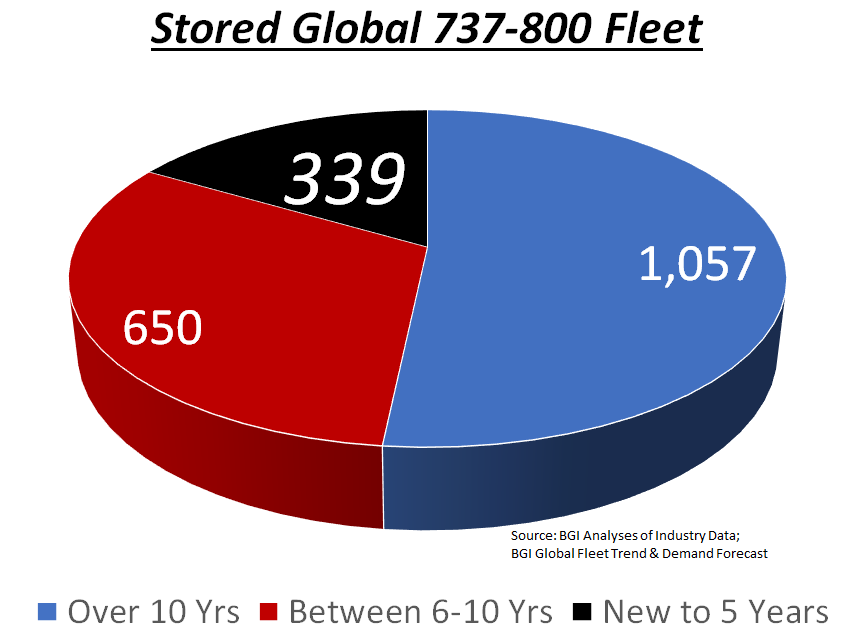The Return of the 737 MAX…
Lots of Messages For Airport Planning
It’s been reported that the FAA will begin comprehensive flight testing of the Boeing 737 Max very shortly.
Some Ready For Prime Time Later Than Others. Of the approximately 800 Max airliners parked, just about half of them have come off the production line after the March 2019 grounding, and likely still have a lot or a little finish work to be accomplished.
But the other 400 were already in service, and can be yanked from storage fairly quickly, depending on the level of FAA modifications determined to be needed.
While the opinions seem to be that in any case the FAA process won’t be completed until the fall, this still begs the question whether global airlines will be able to quickly absorb an immediate 400 more narrow-body airliners (the ones in fleets when the grounding occurred), when they might still have dozens of earlier model 737s already stored due to the CCP-COVID pandemic.
A somewhat contrarian conclusion would be that the last quarter of 2020 would be an optimum time for re-entry of the MAX. And if there is any reasonable expectation of these machines returning to operational status in the fall, that may be an incentive for carriers to simply leave many of the earlier 737-800 versions in the desert.
The Age Mix of Stored 737-800s. A review of the inventory of the 2,046 737-800s that are currently in storage indicates that while the average age is about 9 years, there are only 339 that are at five years or less. More than half of the 737-800s reported as parked are over ten years in age.
It’s possible that fleet planning departments at the carriers involved might recommend leaving these older units out of the schedule as demand returns, pending the arrival of new Max units.
A Mountain of Theoretical Maybes. There’s a lot of complex factors here, such as lease terms on existing fleets, relative position in component maintenance cycles, the need to generate revenues quickly, and – critically – training of pilots and technicians to operate the Max. Bookings for time in Max-specific simulators will be at a premium, depending on what the new training requirements may be.
But the point remains that the Max could return to service at a point in time where operators might opt to early-retire older 737-800s, even if it means spilling some near-term demand recovery.
Another Factor That Points To Fleet Trends Driving Air Service. The fleet groundings due to the CCP-COVID pandemic have tossed traditional “air service development” approaches into the landfill.
The type of back-to-clean-sheet fleet planning that’s illustrated by the 737Max situation, is in process at every major carrier involving every airplane type. As one example, we’ve seen a complete restructuring of Delta’s narrow body fleet, as well as the retirement of 777s, all aimed at simplifying fleet types. These shifts will materially change Delta’s revenue objectives and reflect a different route map.
Air service access programs must now first focus on the new fleets and mission applications at each carrier, before tossing money at more jive-time “true market studies” that have no bearing on anything unless the conclusions first and foremost tightly match airline fleet strategies.
Naturally, this makes the challenge of building air access planning a lot more granular.
It means that piles of historic O&D tables are reflective only of an air transportation system that no longer exists. As we’ve pointed out recently, that also means that “road hubbing” – collecting more leakage from cities peripheral to each carriers’ connecting hubs – will be a near-term recovery strategy.
Join Industry Leaders At The IAFS™ For Futurist Fleet Projections. The new fleet strategies – which will vary airline to airline- will be one of the major focus areas at the 25th International Aviation Forecast Summit, August 23-25.
This will be the first major event that will explore the post-CCP-COVID aviation industry. We will be having discussions with aircraft manufacturers regarding how they see the future. We’ll be outlining the new factors and imperatives necessary in forecasting demand and consumer trends.
Airlines will be there to deliver their perspectives of the new future. Plus, we’ll be covering incisive forecasts of air service trends and the consumer-driven factors (usually ignored in most such projections) that will frame future air access programs across the nation.
Click here to get the latest and to register for the 25th Boyd group International Aviation Forecast Summit.

